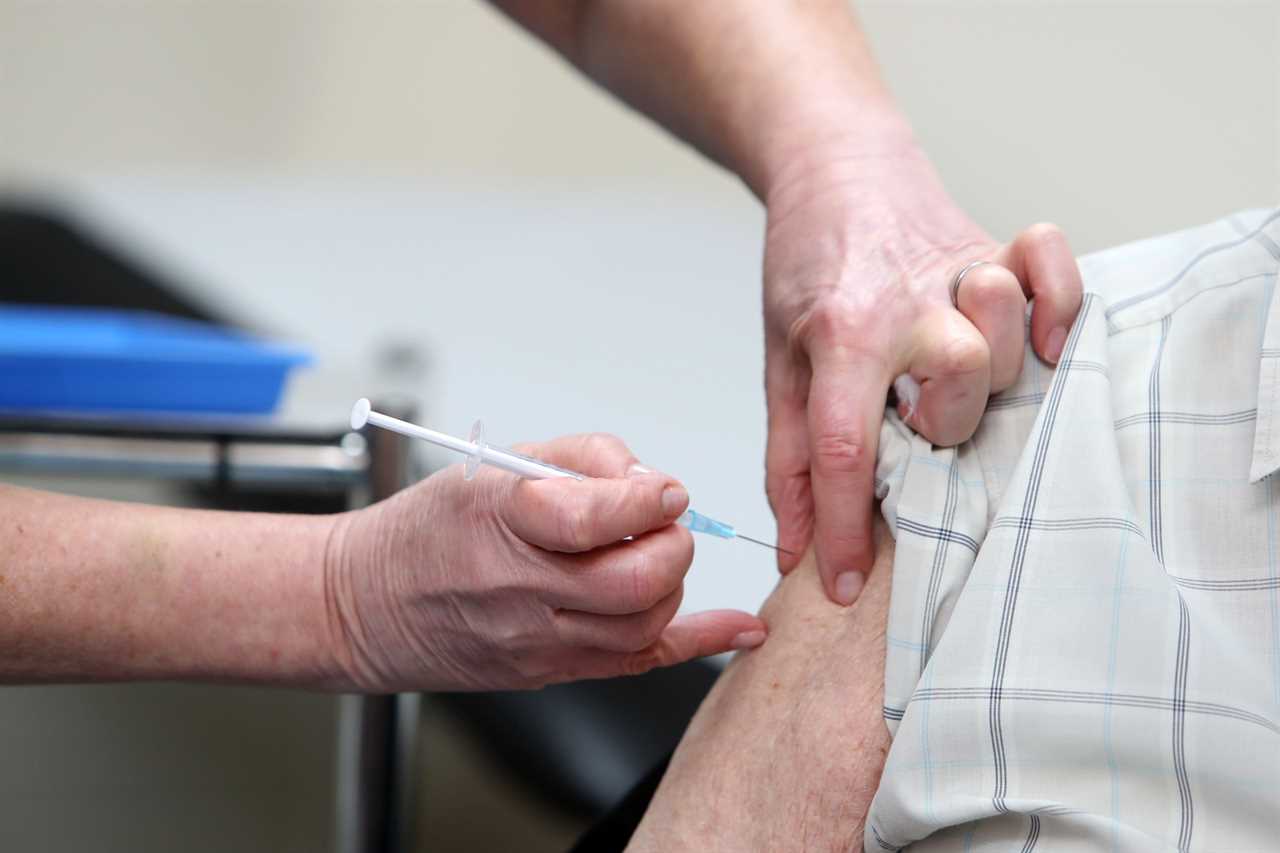THE most common side effects from Covid booster shots have been revealed.
They appear to be very similar to those reported after second doses were administered, and largely mild.

As with any vaccine, it’s expected that when someone has a booster jab they might feel some mild side effects, similar to being “under the weather”.
Pain at the injection site, fatigue and body aching are among the most recognised symptoms.
But, according to anecdotal reports, you may experience dehydration, or extra thirst, after your top-up shot.
A common side effect of the jab is a fever – when someone’s temperature shoots up, it can lead to dehydration.
Dr Vivek Cherian previously told Bustle: “A fairly common side effect after getting vaccinated is developing a fever, which can lead to fluid loss and dehydration via sweating.”
Experts said there is no reason to be concerned if you become a little more thirsty after your jab, especially if it’s as fixable as drinking some more water.
A booster shot is the best protection against Omicron, with early data suggesting it pushes efficacy back up to 75 per cent.
Dr Jenny Harries, UKHSA Chief Executive said: “Once again, we urge everyone who is able to get a booster jab to come forward and do so. It is the best defence we have against this highly transmissible new variant.”
Trending In The News is also urging readers to sign up to the Jabs Army campaign to make the rollout as smooth and fast as possible.
In terms of booster jabs, it may be the case that people feel more unwell than their first two doses due to the “mix and matching” of Astra Zeneca and Pfizer.
Other lesser known “side effects” of vaccination have been identified by doctors, including changes to periods and “Covid toes”.
Researchers in the US looked at how people fared after getting their third vaccine.
SIDE EFFECTS
They logged their symptoms on a mobile app designed to track the safety of jabs, with the seven most common side effects revealed.
Around 79 per cent had reactions at the injection site – pain, redness or swelling.
And 74 per cent said they suffered side effects like fever, headache, chills or joint pain.
However those who received the Moderna vaccine seemed to have more arm pain compared to after the second injection.
These findings are very similar to the percentage who reported the same responses to their second dose.
The Centers for Disease Control and Prevention (CDC) found there are “no unexpected patterns” after boosters, which seem to be well-tolerated.
In Britain, booster jabs are now being rolled out to everyone over 18, and some children in specific groups.
The JCVI has recommended boosters for 16 to 17-year-olds, 12 to 15-year-olds who are in a clinical risk group or who are a household contact of someone (of any age) who is immunosuppressed and 12 to 15 years old who are severely immunocompromised and have had a third primary dose.
Three vaccines have been approved as safe and effective as Covid boosters – AstraZeneca, Pfizer and Moderna – by the drug regulator the MHRA.
But the JCVI have decided to opt for Pfizer as a preference after studies showed it is well tolerated and works well as a booster.
If necessary, Moderna may be used as an alternative, but as a half-dose.
Did you miss our previous article...
https://trendinginthenews.com/covid-19/prospect-of-new-curbs-over-new-year-hasnt-been-lifted-but-there-are-reasons-to-be-merry






